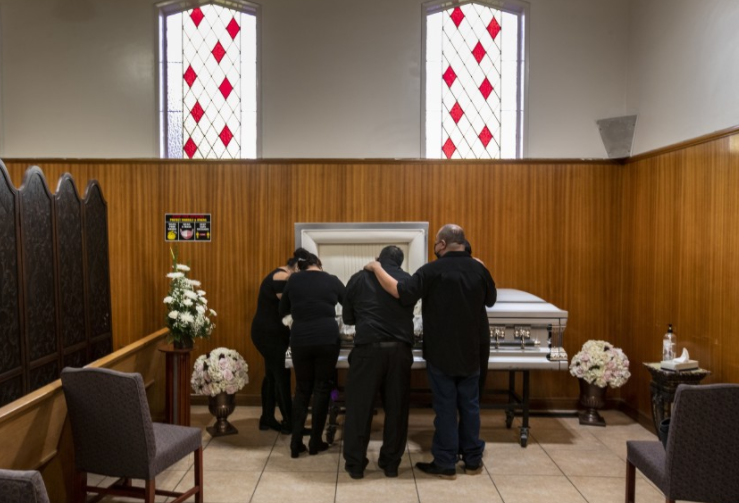Retail Stores Becoming 'Mortal
Threat' in LA

New Outbreaks at Retail Establishments &
Essential Businesses
From Costco and Target to TV sitcom sets, L.A. workplaces hit with coronavirus
outbreaks
With Los Angeles County now a leading hot spot of America’s coronavirus crisis,
the statistics are hard to process. A person is dying every 10 minutes.
And Mayor Eric Garcetti noted Sunday that a person was getting infected every
six seconds.
But one thing about the pandemic has not changed during the darkest phase: those
who suffer most. For those with the means to stay home and the ability and
determination to avoid gatherings, COVID-19 has remained a relatively low risk.
For people living in crowded conditions and who must work, it’s become an
even more mortal threat.

Workplaces remain an area of growing concern amid new outbreaks at retail
establishments as well as other businesses deemed essential. The massive
increase in cases increases the chances of workplace transmission.
There are seven Costco warehouses with clusters of confirmed cases of at
least 15 infected staffers, with a Culver City location reporting 71 staffers
having tested positive for the virus, one in Van Nuys with 50 and another in
Woodland Hills with 42. Other affected stores are in Lancaster, Monterey Park,
Santa Clarita and the business warehouse in Burbank, according to
data released by the L.A. County Department of Public Health.
&uuid=(email))
There are eight Home Depots in L.A. County with active outbreaks,
including in Alhambra, Cypress Park, Downey, South L.A., North Hollywood,
Panorama City, Van Nuys and Signal Hill, near Long Beach. Ten outbreaks at
Target locations in L.A. County have been reported recently, with 217
staff members infected.
There also have been infections recently among staff at six McDonald’s
locations, four Chick-Fil-A restaurants and two In-N-Outs; at Best Buy stores in
Downey and West Hollywood; the Nordstrom in Cerritos; Trader Joe’s in Glendale
and North Hollywood; Whole Foods markets in Santa Monica and Sherman Oaks; and
Apple stores at the Beverly Center, Glendale Galleria and Los Cerritos Center.
Apple closed retail locations in California before Christmas because of the
surge.
“Southern California hospitals are facing a crisis the likes of which we have
never seen before. Patients are dying in ambulances waiting for treatment
because hospital emergency rooms are overwhelmed. This is not a safe environment
for in-person production right now,” SAG-AFTRA President Gabrielle Carteris said
in a statement.
In Los Angeles County, the coronavirus crisis is forcing the medical system into
increasingly desperate measures, with healthcare providers running low
on equipment,
ambulance operators being told not to bring patients who have
virtually no chance of survival to hospitals, and officials scrambling to
ensure they can provide enough lifesaving oxygen for critically ill patients.
The outbreaks can sometimes represent poor infection control practices at
businesses, but sometimes they don’t. Earlier in the pandemic, officials said
some outbreaks — defined as three or more reports of infections among workers at
a business over a 14-day period — are more a sign of how widespread the virus is
in this county of more than 10 million people, where the virus can be passed
from social gatherings to workplaces and then to new homes — a vicious cycle.
There is no doubt that a major factor in virus transmission is social
gatherings, including holiday family events and big New Year’s Eve parties. LAPD
and Sheriff’s Department officials said they broke up at least 13 New Year’s Eve
gatherings involving more than 2,900 people and arrested at least 90 adults on
suspicion of violating the stay-at-home order.
It’s also becoming increasingly likely that the virus is spreading more often at
workplaces run by essential workers, who then transmit the virus to family or
roommates at home.
That is particularly a concern in Los Angeles County’s densely populated,
heavily Latino neighborhoods, which have some of the worst rates of virus cases.
Experts say people who must leave home to work and those who live in crowded
housing arrangements, often due to the high cost of housing, are at higher risk
of contracting the coronavirus.
Article originally published on
latimes.com

&uuid=(email))


&uuid=(email))
&uuid=(email))
